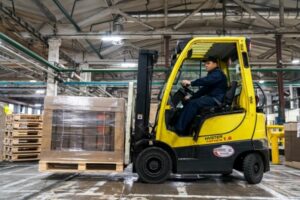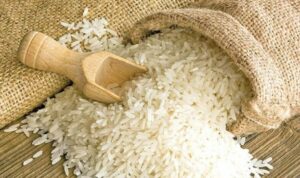
Ukraine ranks 28th in the world in wine production according to data for 2022, reported in the center of socio-economic research “CASE Ukraine”.
“We produced as of 2022 660 thousand hectoliters, or 0.26% of the world wine market,” – stated the experts.
According to the report, the first place belongs to Italy with 49.843 million hectoliters, which is 19.3% of total world production, the second – France (45.59 million hectoliters, 17.65%), the third – Spain (35.7 million hectoliters, 13.83%).
The analysts attributed the reasons for Ukraine’s low wine production to the destruction of vineyards in the Soviet Union during the fight against alcoholism, the Russian Federation’s transformation of the wine-growing regions of Kherson and Mykolaiv regions into a frontline zone since the occupation of Crimea in 2014, as well as the absence of a land market until 2020 and the existence of restrictions on land acquisition by legal entities and foreign investors.

China has increased its imports of semiconductor component manufacturing equipment to a record level ahead of the entry into force of export restrictions by Japan and the Netherlands, the Financial Times reports.
According to the General Administration of Customs of the People’s Republic of China, the volume of imports of equipment for the production of chips in June and July amounted to about $ 5 billion, which is 70% higher than the figure for the same period last year ($ 2.9 billion).
China purchased the bulk of the equipment from the Netherlands and Japan. These two countries announced in January of this year that they would join the U.S. export restrictions on China’s semiconductor equipment.
In Japan, these restrictions will come into effect on July 23, and in the Netherlands – on September 1. Once they come into effect, buyers of equipment will have to obtain special licenses from the governments of these countries.
As the FT notes, the increased imports of chip-making equipment shows that China wants to avoid any disruption to its plans to expand semiconductor production.
“This is one of China’s responses to export restrictions imposed by the Netherlands and Japan,” notes Lucy Chen, vice president at Taiwanese analyst firm Isaiah Research. – Beijing is stockpiling equipment in advance to negate potential supply chain problems.”
China’s imports of Dutch chip-making equipment doubled in June and July compared with May due to increased shipments by ASML Holding NV, FT industry sources said.
ASML chief executive Peter Wennink said on an investor conference call last month that there was strong demand for equipment designed to produce non-advanced chips from Chinese buyers.
Imports from Japan also rose. In addition, there has been an increase in shipments to China of chip-making equipment from Singapore and Taiwan, the FT notes.
CHINA, IMPORT, PRODUCTION, ЧИП

The Verkhovna Rada has passed in the second reading and as a whole the law “On state regulation of genetically engineered activities and state control over the placement of genetically modified organisms and products on the market”.
The corresponding bill №5839 was supported by 276 people’s deputies at the plenary session on Wednesday, a member of the faction “Golos” Yaroslav Zheleznyak reported in Telegram.
According to the explanatory note, the document defines the legal and organizational basis for the state regulation of genetically engineered activities, ensuring environmental, genetic, food and biological security of the state and state control over the placement of genetically modified organisms and products on the market.
It defines the terms “genetically modified organism”, “genetically modified products”, “GM products as a food product”, introduces state registration of GMOs, etc.
Before the law was adopted in the second reading, it was amended to prohibit the cultivation and import of GM corn, as well as the cultivation of genetically modified sugar beets and rapeseed for five years.
The document introduces a comprehensive regulation of the legal and organizational foundations of genetically engineered activities by means of state supervision (control) over the use of genetically modified organisms and the turnover of GM products.
The bill also delimits the powers of state authorities to avoid duplication of functions in the sphere of GMO handling; improves the system of GMO risk assessment with regard to possible impact on human health and the natural environment; introduces European mechanisms for state registration of GMOs; improves requirements for labeling of GM products and introduces rules for their traceability; strengthens state control in the sphere of GMO handling and establishes liability for violation of legislation in this sphere.

Sukhaya Balka mine (Kryvyi Rih, Dnipro region), part of Aleksandr Yaroslavsky’s DCH Group, increased crude iron ore production by 32%, or about 300 thousand tons, in the second quarter of this year.
The mine’s chief engineer, Igor Piltek, told DCH Steel’s corporate newspaper on Thursday that the production is short of workers in key job specialties. Therefore, the mine was forced to stop the technological process at the Frunze mine. The lack of a market for products also had a negative impact.
In addition, Yubileynaya mine is not yet being used to its full capacity, and the workforce is working depending on the situation with product shipments and the availability of qualified personnel.
“However, if we compare the performance of the first and second quarters of this year, we see an increase in production in the second quarter. Crude ore production increased by 32% to about 300 thousand tons, and commercial ore production by 42% (260 thousand tons) (…) This growth is primarily due to an increase in working hours. While at the beginning of the year the company’s team worked a reduced working week, in the second quarter, employees of the leading mining professions (sinking, mining, mine construction) returned to a full working week,” explained the chief engineer.
He also said that after the occupation of Mariupol and the destruction of Sukhoi Balka’s main consumer of ore, the company reoriented to another market: ore is being sold to Western partners, metal producers. The mine’s ore is consumed by steel mills in Slovakia, the Czech Republic, Hungary and Serbia.
“This spring, sales volumes increased, but in the summer, due to the crisis in the steel industry, we are seeing a decline. The shutdown of four blast furnaces at European steel mills reduced the need for raw materials. Sales volumes of the mine’s products decreased. We hope that the situation will improve in September,” said Piltek.
Commenting on the water situation, the chief engineer pointed to the shortage of water after the destruction of the Kakhovka hydroelectric power station. In particular, the lack of water affects the operation of the Central Compressor Station: the unit usually uses about 300 cubic meters of water, but in the current conditions, given the lack of resources, the company has developed a number of measures to reduce consumption. Significant savings have been made at Frunze mine, the industrial site of Yubileynaya mine, and auxiliary units. Water consumption was reduced by 30%.
It is also noted that difficulties with the company’s energy supply are expected in winter, so this year a new powerful generator was installed at Tsentralnaya mine to ensure the withdrawal of miners from the mine in case of a power outage.
“In the near future, we expect to receive five 20 kW generators to create a reserve and meet the needs of surface facilities,” added Piltek.
Sukha Balka mine is one of the leading mining companies in Ukraine. It produces iron ore by underground mining. The mine includes Yubileynaya and Frunze mines. DCH Group acquired the mine from Evraz Group in May 2017.

Tripillya Packaging Combine (TPC, Ukrainka, Kyiv region), a subsidiary of Rubizhansky Cardboard and Packaging Plant, which stopped its work in Lugansk region, in January-July this year produced UAH 1 billion 406.7 million, which is 28.7% more than in the same period of 2022.
According to statistical data provided to Interfax-Ukraine by the UkrPapir association, the mill produced 77.86 million square meters of corrugated packaging during this period – 16.6% more, which consistently remains the second result in terms of output after Kiev Cardboard and Paper Mill (128.2 million square meters).
Including in July, the mill increased the output of these products by 2% against July-2022 and by 12% against June this year – up to 12.45 million square meters.
In total, the main enterprises of the industry, providing data from the association “UkrPapir”, in January-July produced 283.45 million square meters of cardboard packaging – 16.3% more than in the same period of 2022, including in July – 44.14 million square meters (6.6% more).
As reported, before the full-scale invasion of Ukraine by the Russian Federation, Rubizhansky KTK together with TUK predominantly led the market of corrugated packaging producers in Ukraine.
After the destruction, the plant in Rubizhne was shut down and the legal entity “Rubizhansky KTK” was re-registered in Kyiv.
TUK produces a wide range of corrugated cardboard products for foodstuffs, industrial goods, and goods of chemical industry.
Among its clients are Roshen, Coca-Cola, agricultural holding MHP, and Lactalis Group.
According to Opendatabot, RKTK JSC owns 99.96% in TUK LLC, and the ultimate beneficiary is the general director (and beneficiary) of Rubizhansky KTK JSC, Gennady Minin, who since September 2022 also manages the Tripillya Packing Plant.
TUK in 2022 received almost UAH 232 mln of net profit and UAH 2.38 bln of revenue.

Rice production in Ukraine in 2022 due to a full-scale war decreased 16 times compared to the previous year and amounted to only 3.1 thousand tons, while in the season-2023 this figure may increase by 3.5 times – up to 11 thousand tons, reported the Ukrainian Club of Agrarian Business (UCAB).
Its analysts recall that before the war, Odessa and Kherson regions were engaged in rice cultivation due to natural and climatic conditions.
“Due to the Russian attack, part of the territory of Kherson region was occupied, accordingly, Ukraine lost the opportunity to grow rice on these lands as early as last year. It should be noted that the production of this crop was mainly engaged in the left-bank part of the region, which is still under temporary occupation. Therefore, for a year and a half we have no possibility to get rice from this part of Ukraine,” the experts noted, adding that after the Kakhovskaya HPP dam was blown up, the chance of revival of rice farming in this region is extremely low.
According to their information, now only Odessa region is engaged in rice farming, which in 2022 grew about 3.1 thousand tons. Experts explained such small volumes by the uncertainty at the beginning of the war and reorientation to higher priority crops. As forecasted in UCAB, that in 2023 the situation in the region will slightly improve and the own production of rice will reach about 11 thousand tons.
Analysts also emphasized that Ukraine has always imported more rice than it grows, as there are countries where natural and climatic conditions are more favorable for growing this crop. However, the ability to provide itself with the necessary foodstuffs, guaranteeing its own food security, is also important.
Despite the war and the destruction of traditional logistical routes, the volume of rice imports remains at a relatively stable level, assures the UCAB.
According to its data, Ukraine imported 87.6 thousand tons of rice in 2022, which is 5% more than in 2021. The main supplier countries were China, India and Pakistan.
“In 2023, imports are expected at 73 thousand tons – 17% lower than in 2022. The reduction in imports is due to the increase in world rice prices and the low solvency of Ukrainians,” the UCAB summarized.